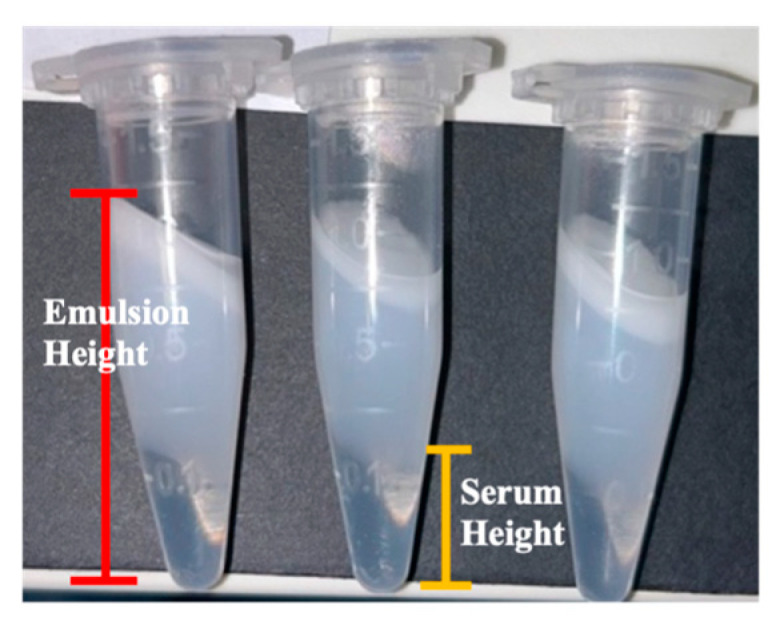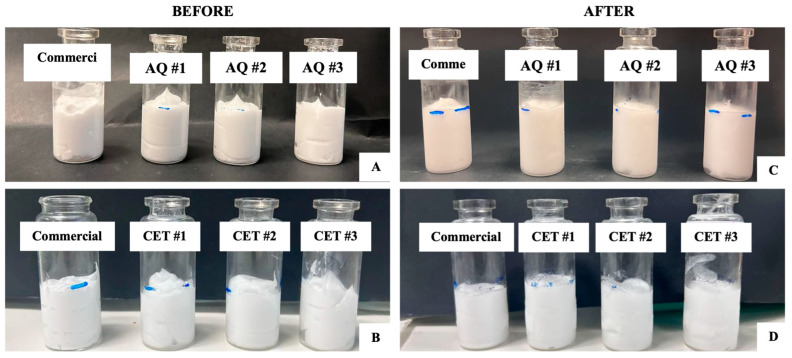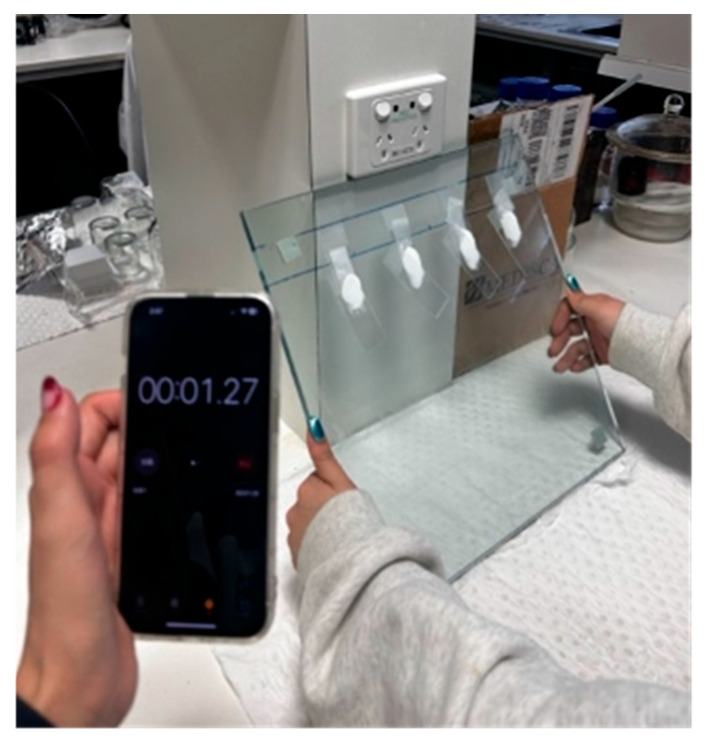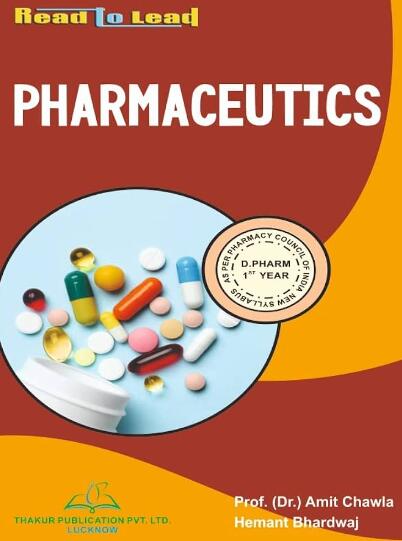Okhee Yoo, Wenting Li, Siyu Ruan, Elizabeth Syme, Alisha Rodrigo, Connelia Locher, Sharmin Sultana, Lee Yong Lim
下载PDF
{"title":"Optimisation of Medicine Compounding Using Quality by Design Approach: Case Studies of Two Aqueous Cream Formulations.","authors":"Okhee Yoo, Wenting Li, Siyu Ruan, Elizabeth Syme, Alisha Rodrigo, Connelia Locher, Sharmin Sultana, Lee Yong Lim","doi":"10.3390/pharmaceutics17091232","DOIUrl":null,"url":null,"abstract":"<p><p><b>Background/Objectives</b>: Quality-by-Design (QbD) is a proactive, risk-based, regulatory-endorsed approach to the development and manufacture of medicinal products but is rarely applied to medicines compounded by pharmacists. This study aims to apply the QbD approach to optimise the compounding processes for the aqueous cream and cetomacrogol cream formulations listed in the Australian Pharmaceutical Formulary and Handbook (APF). <b>Methods</b>: The creams were prepared by varying the process conditions, including oil and water phase temperatures, stirring speed, cooling environment temperature, and the temperature at the end of stirring. Thirty-two samples of each cream type were prepared using combinations of processing conditions defined by a three-level factorial design. The viscosity, spreadability and creaming index of samples were assessed as response variables, and results were analysed using Stat-Ease 360© software to determine the optimal processing conditions for the two creams. To validate the predictive model and assess further cream stability, triplicate creams of each formulation were prepared using the optimised conditions and evaluated for dynamic viscosity, spreadability and creaming index. <b>Results</b>: Optimal conditions for aqueous cream involved heating the oil and water phases to 60 °C and 80 °C, respectively, followed by stirring the two phases at 250 rpm at 10 °C until cooling to 50 °C. For cetomacrogol cream, optimal compounding required heating the oil and water phases to 70 °C and 75 °C, respectively, with stirring the two phases at 220 rpm at ambient temperature (25 °C) until cooling to 40 °C. The conditions predicted by the models successfully yielded creams that met all specified targets. Creams compounded under optimal conditions exhibited well-defined oil droplets, with uniform droplet size in aqueous cream and mild size heterogeneity in cetomacrogol cream. Freeze-thaw testing demonstrated that both optimised creams were stable with no observable phase separation. <b>Conclusions</b>: This study demonstrates that a systematic experimental approach to optimising compounding parameters for the APF aqueous cream and cetomacrogol cream resulted in high-quality, stable, and reproducible products. Formulary guidelines, such as the APF, could benefit from adopting QbD approaches to improve the standardisation of compounding instructions in pharmacy practice.</p>","PeriodicalId":19894,"journal":{"name":"Pharmaceutics","volume":"17 9","pages":""},"PeriodicalIF":5.5000,"publicationDate":"2025-09-22","publicationTypes":"Journal Article","fieldsOfStudy":null,"isOpenAccess":false,"openAccessPdf":"https://www.ncbi.nlm.nih.gov/pmc/articles/PMC12473363/pdf/","citationCount":"0","resultStr":null,"platform":"Semanticscholar","paperid":null,"PeriodicalName":"Pharmaceutics","FirstCategoryId":"3","ListUrlMain":"https://doi.org/10.3390/pharmaceutics17091232","RegionNum":3,"RegionCategory":"医学","ArticlePicture":[],"TitleCN":null,"AbstractTextCN":null,"PMCID":null,"EPubDate":"","PubModel":"","JCR":"Q1","JCRName":"PHARMACOLOGY & PHARMACY","Score":null,"Total":0}
引用次数: 0
引用
批量引用
Abstract
Background/Objectives : Quality-by-Design (QbD) is a proactive, risk-based, regulatory-endorsed approach to the development and manufacture of medicinal products but is rarely applied to medicines compounded by pharmacists. This study aims to apply the QbD approach to optimise the compounding processes for the aqueous cream and cetomacrogol cream formulations listed in the Australian Pharmaceutical Formulary and Handbook (APF). Methods : The creams were prepared by varying the process conditions, including oil and water phase temperatures, stirring speed, cooling environment temperature, and the temperature at the end of stirring. Thirty-two samples of each cream type were prepared using combinations of processing conditions defined by a three-level factorial design. The viscosity, spreadability and creaming index of samples were assessed as response variables, and results were analysed using Stat-Ease 360© software to determine the optimal processing conditions for the two creams. To validate the predictive model and assess further cream stability, triplicate creams of each formulation were prepared using the optimised conditions and evaluated for dynamic viscosity, spreadability and creaming index. Results : Optimal conditions for aqueous cream involved heating the oil and water phases to 60 °C and 80 °C, respectively, followed by stirring the two phases at 250 rpm at 10 °C until cooling to 50 °C. For cetomacrogol cream, optimal compounding required heating the oil and water phases to 70 °C and 75 °C, respectively, with stirring the two phases at 220 rpm at ambient temperature (25 °C) until cooling to 40 °C. The conditions predicted by the models successfully yielded creams that met all specified targets. Creams compounded under optimal conditions exhibited well-defined oil droplets, with uniform droplet size in aqueous cream and mild size heterogeneity in cetomacrogol cream. Freeze-thaw testing demonstrated that both optimised creams were stable with no observable phase separation. Conclusions : This study demonstrates that a systematic experimental approach to optimising compounding parameters for the APF aqueous cream and cetomacrogol cream resulted in high-quality, stable, and reproducible products. Formulary guidelines, such as the APF, could benefit from adopting QbD approaches to improve the standardisation of compounding instructions in pharmacy practice.
用设计方法优化药物配伍质量:两种水乳膏配方的案例研究。
背景/目的:质量设计(QbD)是一种前瞻性的、基于风险的、监管认可的药品开发和生产方法,但很少应用于药剂师配药的药物。本研究旨在应用QbD方法来优化澳大利亚药物处方手册(APF)中列出的水乳膏和鲸烯醇乳膏配方的配制工艺。方法:通过改变油相温度、水相温度、搅拌速度、冷却环境温度、搅拌结束温度等工艺条件制备乳霜。使用三水平析因设计确定的加工条件组合制备每种乳膏类型的32个样品。以样品的粘度、涂抹性和成乳指数为响应变量,利用Stat-Ease 360©软件对结果进行分析,确定两种乳膏的最佳加工条件。为了验证预测模型并进一步评估乳霜的稳定性,采用优化后的条件制备了每种配方的三份乳霜,并对其动态粘度、涂抹性和成乳指数进行了评估。结果:水乳膏的最佳条件为:将油相和水相分别加热至60°C和80°C,然后在10°C下以250 rpm的转速搅拌至50°C。对于鲸烯醇乳膏,最佳配比需要将油相和水相分别加热到70°C和75°C,并在室温(25°C)下以220转/分的转速搅拌,直到冷却到40°C。模型预测的条件成功地产生了满足所有指定目标的乳霜。在最佳条件下合成的乳膏呈现出清晰的油滴,在含水乳膏中油滴大小均匀,在鲸烯醇乳膏中油滴大小不均匀。冻融试验表明,两种优化的乳霜都是稳定的,没有可观察到的相分离。结论:本研究通过系统的实验方法优化了APF水乳膏和cetomargol乳膏的配伍参数,获得了高质量、稳定、可重复性好的产品。处方指南,如APF,可以从采用QbD方法来提高药学实践中配药说明的标准化中受益。
本文章由计算机程序翻译,如有差异,请以英文原文为准。




 求助内容:
求助内容: 应助结果提醒方式:
应助结果提醒方式:


